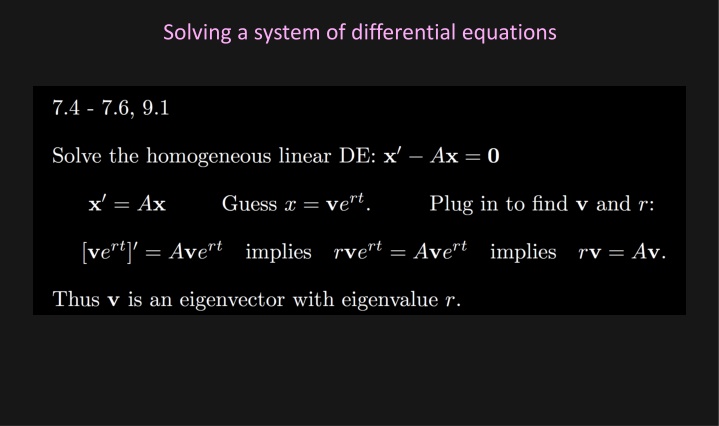
Differential Equations and System Solutions
Dive into the world of differential equations and system solutions, exploring concepts like stable centers, eigenvalues, direction fields, and factorization techniques. Learn about linear vs. nonlinear systems, unstable saddle points, and the importance of eigenvalues in determining system behavior.
Download Presentation

Please find below an Image/Link to download the presentation.
The content on the website is provided AS IS for your information and personal use only. It may not be sold, licensed, or shared on other websites without obtaining consent from the author. If you encounter any issues during the download, it is possible that the publisher has removed the file from their server.
You are allowed to download the files provided on this website for personal or commercial use, subject to the condition that they are used lawfully. All files are the property of their respective owners.
The content on the website is provided AS IS for your information and personal use only. It may not be sold, licensed, or shared on other websites without obtaining consent from the author.
E N D
Presentation Transcript
? ? q 2= < 0 2= > 0 Complex roots 2 positive eigenvalues 2 negative eigenvalues Two real roots p Repeated roots q < 0 implies 1 positive and 1 negative eigenvalue Two complex roots Unstable
Center is stable, but not asymptotically stable Asymptotically stable Just need one positive expo- nential for Unstable
Answer depends only on the eigenvalues
Locally can be approximated by a stable center Locally can be approximated by an unstable saddle Nonlinear system of differential equations can be locally approximated by linear homog DE x = Ax
Compare to ch 2 direction fields. Both ch 2 and ch 7 direction fields/trajectories are drawn in 2d But in chapter 7, the equilibrium solution is a line in 3d which projects to a point in 2d https://c3d.libretexts.org/DirectionField/index.html
Ch 9 Answer depends only on the eigenvalues
Solving a differential equation 1st order 2nd order Linear vs separable or both homogeneous: plug in er a(t)y + b(t)y = g(t) non-homogeneous: Guess using Ch 6: LaPlace Transform Use linearity+formulas Use integrating factor Separate variables to to create product rule create 2 calculus 2 problems Ch 3 and 4 homog: plug in ert non-homog: Guess using undetermined coefficients ? ? ? = ? ? ?
Be able to factor the following: ??4 ? = 0 ??4+ ??2+ ? = 0 ???3+ ???2+ ??? + ?? = ??2(?? + ?) + ? ?? + ? = (??2+ ?)(?? + ?)
